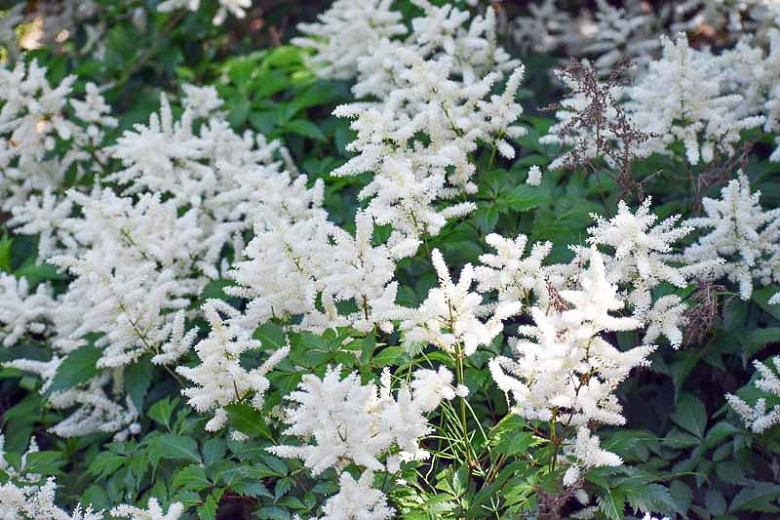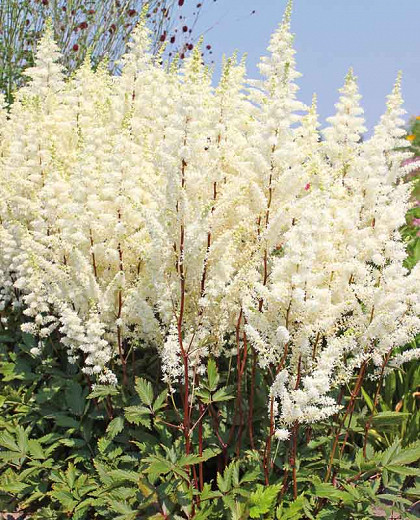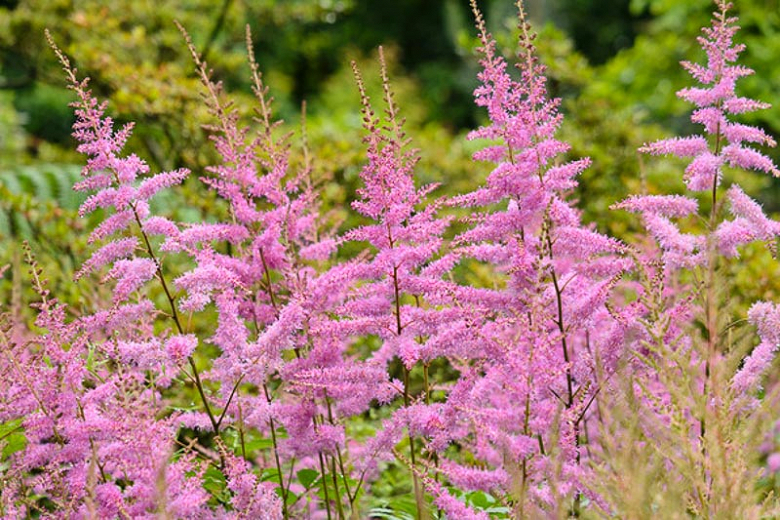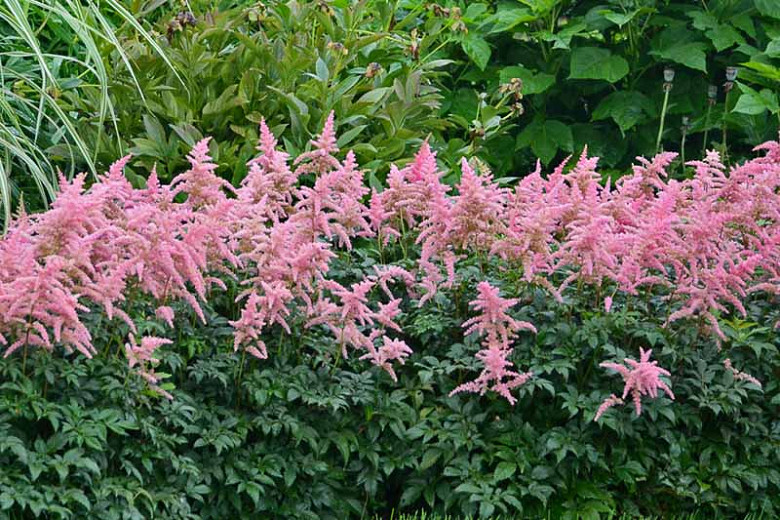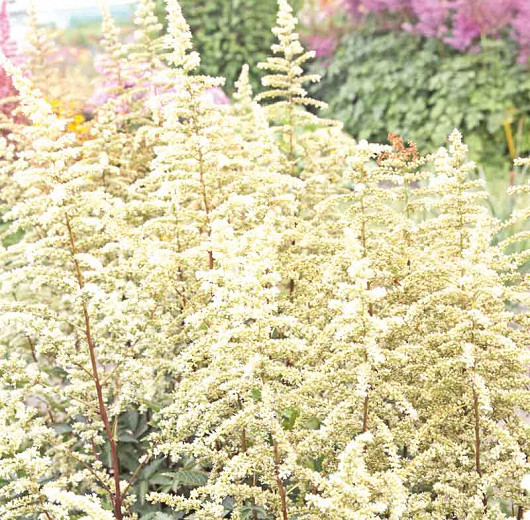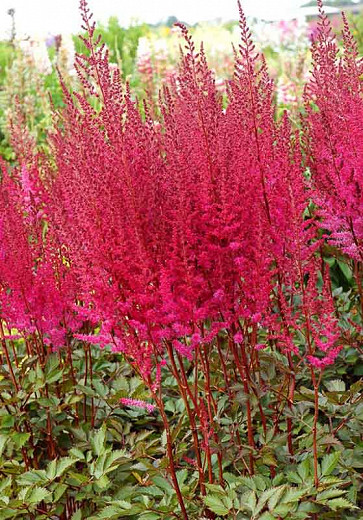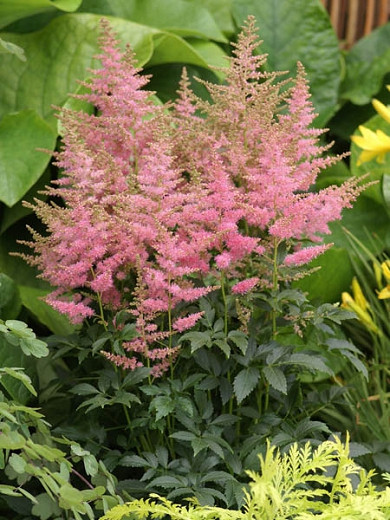Astilbe Bridal Veil (Arendsii Hybrid)
Reliable and free flowering, Astilbe 'Bridal Veil' (Astilbe arendsii) is a compact, clump-forming perennial boasting ivory white flowers held in luminous, pyramidal plumes, which stand out in the night garden. Blooming in early to mid-summer, each plume consists of hundreds of densely packed tiny flowers opening in succession for a long-lasting floral display. They are held on sturdy stems and rise above an attractive mound of fern-like, deep green, glossy leaves. Long-lasting, the flower plumes turn a rich caramel color which provides winter interest to the garden. This robust Astilbe is relatively trouble-free, requires little maintenance, is heavy shade tolerant, and attracts butterflies but is deer and rabbit resistant. The perfect perennial for a shady border with dappled light.
- Recipient of the prestigious Award of Garden Merit of the Royal Horticultural Society (1993)
- Grows up to 28 in. tall (70 cm) and 18-24 in. wide (45-60 cm).
- Part shade to full shade lover, this Astilbe thrives in organically rich, evenly moist, well-drained soils. Don't let the soil dry out! Mulch should be added to reduce water evaporation and maintain moisture.
- May be planted in full sun in areas with cool summers with adequate moisture. In hot summer areas, shade is important.
- Provides a spectacular flower show, whether planted in perennial borders, woodland gardens, near ponds, and streams, or in containers. Plant in groups for better visual effects.
- Plumes make excellent fresh-cut flowers and are great for drying in natural bouquets.
- No serious pest or disease issues. Keep an eye out for powdery mildew.
- No deadheading is required unless you do not like the look of the faded flower stalks. If allowed to remain, the dried seedheads will provide additional interest later in the season.
- Should be divided about every 4 years to assure the maximum number of blooms.
- Propagate by division.
Requirements
| Hardiness | 4 – 8 |
|---|---|
| Heat Zones | 2 – 8 |
| Climate Zones | 1, 2, 3, 4, 5, 6, 7, 8, 9, 14, 15, 16, 17, 18, 19, 20, 21, 22, 23, 24, A2, A3 |
| Plant Type | Perennials |
| Plant Family | Astilbe |
| Exposure | Full Sun, Partial Sun, Shade |
| Season of Interest | Summer (Early,Mid) |
| Height | 2' – 3' (60cm – 90cm) |
| Spread | 1' – 2' (30cm – 60cm) |
| Spacing | 18″ – 24″ (45cm – 60cm) |
| Water Needs | Average, High |
| Maintenance | Low |
| Soil Type | Loam |
| Soil pH | Acid, Alkaline, Neutral |
| Soil Drainage | Moist but Well-Drained, Moisture Retentive, Poorly Drained |
| Characteristics | Dried Arrangements, Cut Flowers, Plant of Merit, Showy |
| Tolerance | Deer, Rabbit, Wet Soil |
| Attracts | Butterflies |
| Garden Uses | Beds and Borders, Bog Gardens, Ground Covers, Patio and Containers, Ponds and Streams |
| Garden Styles | Informal and Cottage |
